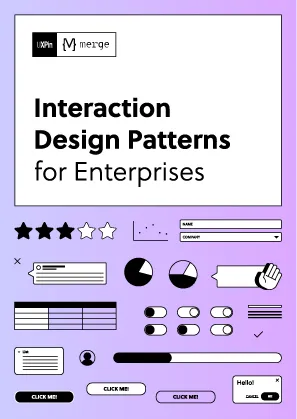Predictive analytics is transforming UX design by using data to anticipate user behavior and create personalized experiences. Here’s why it matters:
- Faster Iterations: Reduces feedback and development cycles from days to hours.
- Personalization: Tailors interfaces to individual user preferences for better engagement.
- Fewer Friction Points: Identifies and resolves potential user issues before they occur.
- Data-Driven Decisions: Refines designs with real-time insights and trends.
By adopting predictive analytics, teams save time, improve satisfaction, and streamline workflows, especially in industries like e-commerce and streaming.
Quick Comparison: Traditional vs. Predictive UX Methods
| Aspect | Standard UX Methods | Predictive Analytics Methods |
|---|---|---|
| Feedback Collection | Manual testing and surveys | Real-time data analysis |
| Iteration Speed | Days to weeks | Hours to days |
| User Testing | Limited test groups | Broad user base analysis |
| Component Creation | Manual design and coding | Automated component creation |
| Design Consistency | Varies across teams | Standardized with code |
| Handoff Process | Multiple revision cycles | Automated code handoff |
Predictive analytics is reshaping UX by enabling faster, smarter, and more efficient design processes.
Predictive Analytics UX- A Case Study
Main Benefits of Predictive Analytics in UX
Expanding on the earlier discussion about anticipating user needs, here’s how predictive analytics can make a measurable difference.
Predicting User Behavior
Predictive analytics helps forecast user actions, personalize interfaces, and speed up iteration cycles. Mark Figueiredo, Senior UX Team Lead at T.RowePrice, highlights its impact:
"What used to take days to gather feedback now takes hours. Add in the time we’ve saved from not emailing back-and-forth and manually redlining, and we’ve probably shaved months off timelines."
Crafting Personalized Experiences
By analyzing behavioral patterns, predictive tools enable interfaces to adjust to individual user preferences. This leads to higher engagement and satisfaction.
Minimizing User Friction
Identifying potential pain points beforehand allows for smoother workflows, fewer drop-offs, and improved task completion rates.
Enhancing Design with Data
Continuous predictive insights help refine designs and improve outcomes by:
- Identifying new trends and shifting user needs
- Backing decisions with data-driven metrics
- Fine-tuning features that deliver the most impact
Next, we’ll explore how to incorporate these insights into your UX workflow.
sbb-itb-f6354c6
Adding Predictive Analytics to UX Process
Data Privacy Guidelines
When incorporating predictive analytics into your UX process, ensure compliance with U.S. privacy laws like the California Consumer Privacy Act (CCPA). Follow these key practices to handle user data responsibly:
- Transparent Data Collection: Clearly explain what data you’re collecting and how it will be used.
- User Consent Management: Provide clear options for obtaining and managing user consent.
- Data Minimization: Only gather data that is absolutely necessary for your predictive analysis.
- Secure Storage: Use encryption and strict access controls to safeguard sensitive data.
These principles should be seamlessly integrated into your design workflows.
Using Analytics in Design Tools
Predictive analytics can be embedded into design tools to make prototyping more data-driven. Platforms like UXPin incorporate these capabilities, allowing designers to create realistic, production-ready prototypes with AI and code-backed components.
Brian Demchak, Sr. UX Designer at AAA Digital & Creative Services, shares:
"As a full stack design team, UXPin Merge is our primary tool when designing user experiences. We have fully integrated our custom-built React Design System and can design with our coded components. It has increased our productivity, quality, and consistency, streamlining our testing of layouts and the developer handoff process."
Larry Sawyer, Lead UX Designer, adds:
"When I used UXPin Merge, our engineering time was reduced by around 50%. Imagine how much money that saves across an enterprise-level organization with dozens of designers and hundreds of engineers." [2]
These improvements highlight the efficiency of predictive design tools compared to traditional UX methods.
UXPin’s predictive design features include:
- AI Component Creator: Quickly build code-backed prototypes.
- Built-in React Libraries: Use MUI, Tailwind UI, and Ant Design for faster layout creation.
- Advanced Interactions: Add variables, conditional logic, and realistic user flows.
- Design-to-Code Workflows: Export code and reuse components seamlessly.
UXPin Website
[2] UXPin Website
Predictive vs. Standard UX Methods
Predictive analytics is changing how UX workflows operate. By embedding analytics into tools and using real-time user data, teams can move beyond traditional methods and start anticipating user needs.
Standard UX relies heavily on historical data and manual feedback. In contrast, predictive methods use real-time behavior data and AI models to make faster, more informed decisions.
Method Comparison
Here’s a breakdown of how predictive analytics changes key aspects of UX workflows:
| Aspect | Standard UX Methods | Predictive Analytics |
|---|---|---|
| Feedback Collection | Manual user testing and surveys | Real-time data analysis |
| Iteration Speed | Days to weeks | Hours to days |
| User Testing | Limited test groups | Analysis across a broad user base |
| Component Creation | Manual design and coding | Automated component generation |
| Design Consistency | Varies across teams | Standardized with coded components |
| Handoff Process | Multiple revision cycles | Automated handoff via shared code |
Predictive analytics helps speed up iterations and creates a smoother workflow between designers and developers.
"What used to take days to gather feedback now takes hours. Add in the time we’ve saved from not emailing back‑and‑forth and manually redlining, and we’ve probably shaved months off timelines."
UXPin Website
Conclusion
Key Advantages Overview
Incorporating predictive analytics into UX design has shown clear benefits:
- Cuts engineering time by 50%, reducing iteration cycles from days to hours [2].
- Streamlines design-to-code workflows, improving both productivity and consistency [2].
- Leverages real-time data analysis to identify and resolve friction points, creating smoother user experiences.
With these benefits, teams can elevate their UX strategy by weaving predictive analytics into every stage of the design process.
Steps to Maximize UX Analytics
To make the most of these insights, organizations should prioritize:
- Making data-driven decisions by integrating real-time user behavior analysis into design workflows.
- Automating workflows to minimize manual tasks and simplify the design-to-development transition.
- Adopting component-based design to maintain consistency and speed up development timelines.

